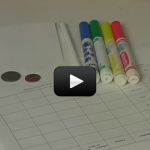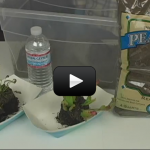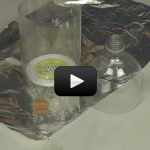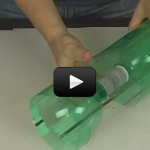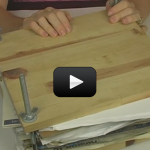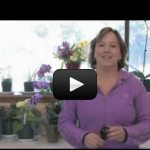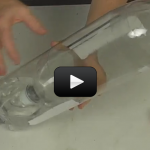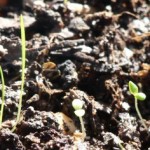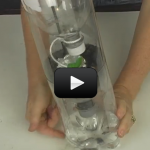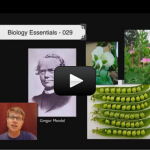Tracking Traits
Why do families share similar features like eye and hair color? Why aren’t they exact clones of each other? These questions and many more will be answered as well look into the fascinating world of genetics! Genetics asks which features are passed on from generation to generation in living things. It also tries to explain … Continue reading "Tracking Traits" |
Carnivorous Greenhouse
Plants need light, water, and soil to grow. If you provide those things, you can make your own greenhouse where you can easily observe plants growing. Here’s a simple experiment on how to use the stuff from your recycling bin to make your own garden greenhouse. We’ll first look at how to make a standard, … Continue reading "Carnivorous Greenhouse" |
Predator-Prey: Who Eats Whom?
The way animals and plants behave is so complicated because it not only depends on climate, water availability, competition for resources, nutrients available, and disease presence but also having the patience and ability to study them close-up. We’re going to build an eco-system where you’ll farm prey stock for the predators so you’ll be able … Continue reading "Predator-Prey: Who Eats Whom?" |
Eco-Column:
What grows in the corner of your windowsill? In the cracks in the sidewalk? Under the front steps? In the gutter at the bottom of the driveway? Specifically, how doe these animals build their homes and how much space do they need? What do they eat? Where do fish get their food? How do ants … Continue reading "Eco-Column:" |
Make an Insect Aspirator
Some insects are just too small! Even if we try to carefully pick them up with forceps, they either escape or are crushed. What to do? Answer: Make an insect aspirator! An insect aspirator is a simple tool scientists use to collect bugs and insects that are too small to be picked up manually. Basically … Continue reading "Make an Insect Aspirator" |
Plant Press
Art and science meet in a plant press. Whether you want to include the interesting flora you find in your scientific journal, or make a beautiful handmade greeting card, a plant press is invaluable. They are very cheap and easy to make, too! [am4show have=’p8;p9;p11;p38;p92;p27;p54;p153;p65;p78;p86;’ guest_error=’Guest error message’ user_error=’User error message’ ] Here’s what you … Continue reading "Plant Press" |
What Color Light Do Plants Like Best?
If you’re thinking sunlight, you’re right. Natural light is best for plants for any part of the plant’s life cycle. But what can you offer indoor plants? In Unit 9 we learned how light contains different colors (wavelengths), and it’s important to understand which wavelengths your indoor plant prefers. Plants make their food through photosynthesis: … Continue reading "What Color Light Do Plants Like Best?" |
Terraqua Column: How does water affect land and animals?
How does salt affect plant growth, like when we use salt to de-ice snowy winter roads? How does adding fertilizer to the soil help or hurt the plants? What type of soil best purifies the water? All these questions and more can be answered by building a terrarium-aquarium system to discover how these systems are … Continue reading "Terraqua Column: How does water affect land and animals?" |
Monocots and Dicots
Flowering plants can be divided into monocotyledons and dicotyledons (monocots and dicots). The name is based on how many leaves sprout from the seed, but there are other ways to tell them apart. For monocots, these will be in multiples of three (wheat is an example of a monocot). If you count the number of petals … Continue reading "Monocots and Dicots" |
Water Cycle Column: Is Rain Pure?
When birds and animals drink from lakes, rivers, and ponds, how pure it is? Are they really getting the water they need, or are they getting something else with the water? This is a great experiment to see how water moves through natural systems. We’ll explore how water and the atmosphere are both polluted and … Continue reading "Water Cycle Column: Is Rain Pure?" |
Water Cycle Column: Is Rain Pure?
When birds and animals drink from lakes, rivers, and ponds, how pure it is? Are they really getting the water they need, or are they getting something else with the water? This is a great experiment to see how water moves through natural systems. We’ll explore how water and the atmosphere are both polluted and … Continue reading "Water Cycle Column: Is Rain Pure?" |
Terraqua Column
How does salt affect plant growth, like when we use salt to de-ice snowy winter roads? How does adding fertilizer to the soil help or hurt the plants? What type of soil best purifies the water? All these questions and more can be answered by building a terrarium-aquarium system to discover how these systems are … Continue reading "Terraqua Column" |
Make an Insect Aspirator
Some insects are just too small! Even if we try to carefully pick them up with forceps, they either escape or are crushed. What to do? Answer: Make an insect aspirator! An insect aspirator is a simple tool scientists use to collect bugs and insects that are too small to be picked up manually. Basically … Continue reading "Make an Insect Aspirator" |
Predator-Prey: Who Eats Whom?
The way animals and plants behave is so complicated because it not only depends on climate, water availability, competition for resources, nutrients available, and disease presence but also having the patience and ability to study them close-up. We’re going to build an eco-system where you’ll farm prey stock for the predators so you’ll be able … Continue reading "Predator-Prey: Who Eats Whom?" |
Eco-Column
What grows in the corner of your windowsill? In the cracks in the sidewalk? Under the front steps? In the gutter at the bottom of the driveway? Specifically, how doe these animals build their homes and how much space do they need? What do they eat? Where do fish get their food? How do ants … Continue reading "Eco-Column" |
What Color Light Do Plants Like Best?
If you’re thinking sunlight, you’re right. Natural light is best for plants for any part of the plant’s life cycle. But what can you offer indoor plants? In Unit 9 we learned how light contains different colors (wavelengths), and it’s important to understand which wavelengths your indoor plant prefers. Plants make their food through photosynthesis: … Continue reading "What Color Light Do Plants Like Best?" |
Plant Press
Art and science meet in a plant press. Whether you want to include the interesting flora you find in your scientific journal, or make a beautiful handmade greeting card, a plant press is invaluable. They are very cheap and easy to make, too! [am4show have=’p8;p9;p27;p54;p153;p65;p78;p86;’ guest_error=’Guest error message’ user_error=’User error message’ ] Here’s what you … Continue reading "Plant Press" |
Monocots and Dicots
Flowering plants can be divided into monocotyledons and dicotyledons (monocots and dicots). The name is based on how many leaves sprout from the seed, but there are other ways to tell them apart. For monocots, these will be in multiples of three (wheat is an example of a monocot). If you count the number of petals … Continue reading "Monocots and Dicots" |
Carnivorous Greenhouse
Plants need light, water, and soil to grow. If you provide those things, you can make your own greenhouse where you can easily observe plants growing. Here’s a simple experiment on how to use the stuff from your recycling bin to make your own garden greenhouse. We’ll first look at how to make a standard, … Continue reading "Carnivorous Greenhouse" |
Tracking Traits
Why do families share similar features like eye and hair color? Why aren’t they exact clones of each other? These questions and many more will be answered as well look into the fascinating world of genetics! Genetics asks which features are passed on from generation to generation in living things. It also tries to explain … Continue reading "Tracking Traits" |
Family Pedigree
A pedigree analysis chart, usually used for families, allow us to visualize the inheritance of genotypes and phenotypes (traits). In this chart, the P, F1, and F2 generation are represented by the numerals I, II, and III respectively. Notice that those carrying the trait are colored red, and those not carrying the trait (the normal-looking … Continue reading "Family Pedigree" |

